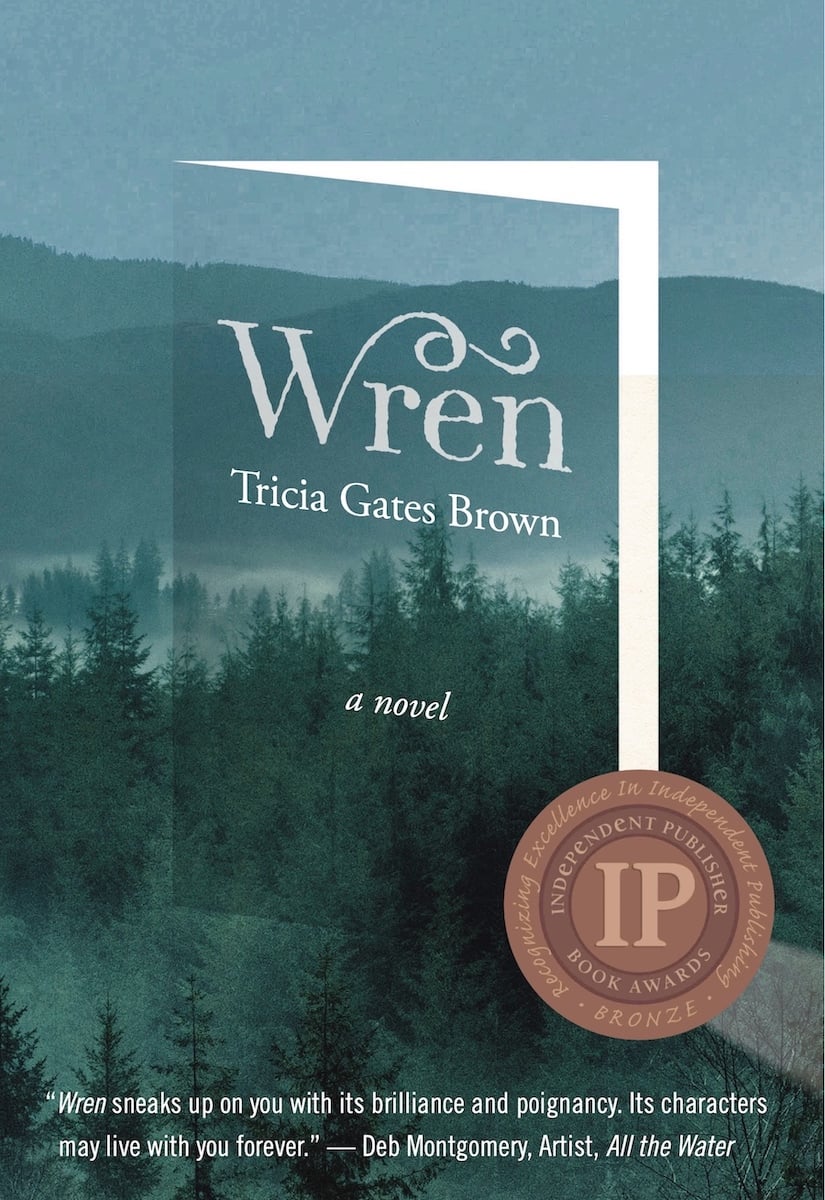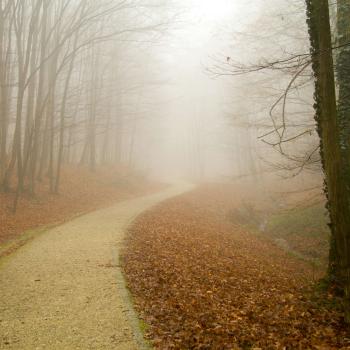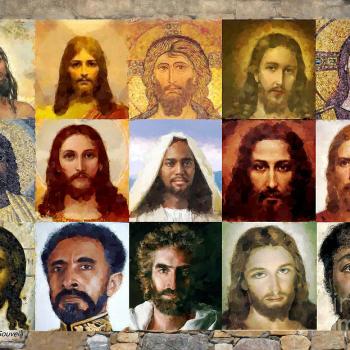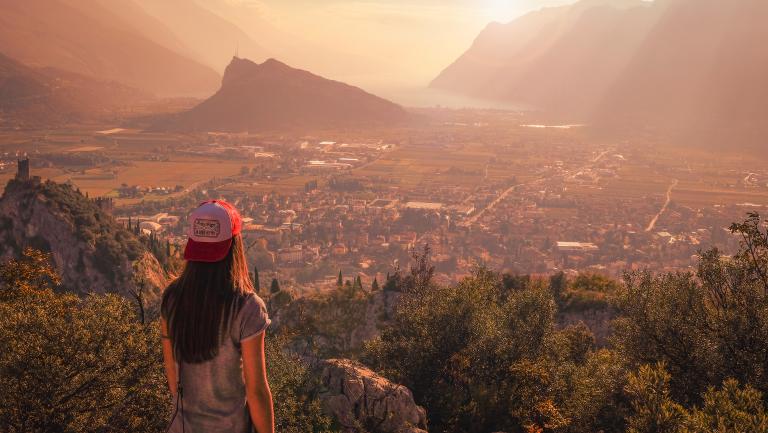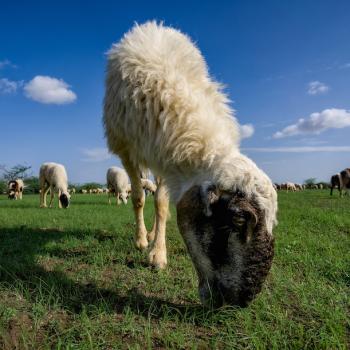
Though I am no expert on the path of mystical Judaism called Kabbalah, my thinking about God has been profoundly shaped by it. This is because I happened upon Rabbi Lawrence Kushner, teacher of Kabbalah, in the mid-2010s, in an OnBeing interview where he narrated an illustration of God that gave contour and language to images impacting my own heart and mind. This image arrived like a long-awaited messenger, weaving together threads of thought, intuition, and longing I’d had for some time. In his interview with Krista Tippett, Kushner said (pardon the long quote—but it’s good):
“There are two ways to understand our relationship with God. I’m going to say right up front that they are both just metaphors, relax. Just metaphors. The first one, picture a big circle and the big circle represents God. And then picture below it a very tiny little circle. And that represents you in the world. And because the big circle is above the little circle, it’s naturally hierarchical, and therefore it’s generically masculine and welcome to Western religion. …OK. That’s the one we all know, and you and all your—all of our listeners could easily talk at length about that. Now I’m going to give you another metaphor. Just another metaphor. Relax. Same big circle that represents God but the only difference is that the little circle that represents you and me is inside the big circle. And that is a more Eastern—it strikes us as a more Eastern model, but it’s —as [Gershom] Scholem demonstrated, it’s widely available in Western religious tradition as well. And the goal in that model is not to pray to God or have God tell you what to do, but to realize that you have been all along, contrary to all of your illusions, a dimension of the divine, and in moments of heightened spiritual awareness, the boundary line, which is the little circle defining you inside the big circle, momentarily is erased. Momentarily is blurred and it’s no longer clear where you end and God begins.”
Since hearing this interview, Kushner’s illustration has been among my favorite ways of understanding God. I then turned to reading about Kabbalah and reading Kushner. I even tried reading the seminal text by Gershom Scholem, the preeminent scholar of Kabbalah, and parts of the Zohar (the 13th century Kabbalistic commentary on the Torah) until they almost broke my head—and I don’t mean in a good way; I felt utterly defeated by them. But from what I did learn, I gleaned more theological imagery that was profoundly helpful and that I carry with me, including an illustration of aspects of God called the Sephirot, in which all things are kept in balance within the Divine—even harshness/judgment (Gevurah), which is ever balanced by God’s loving-kindness (Chesed).
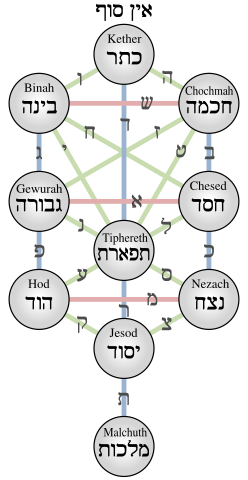
Evil arises when Gevurah exists unchecked by Chesed. The spiritual genius behind Kabbalah is beautiful and very challenging. Kabbalists believe the Sephirot (also sometimes called ‘The Tree of Life’) is a diagrammatic representation of the process by which the universe came into being. This complex model includes many layers of meaning, far more than articulated here. Another key Kabbalistic image is the Ein Sof, or the “source of life,” scattered throughout all of Creation like broken shards (for a lovely narrative description of the Ein Sof by teacher Rachel Naomi Remen, see this link[1]). All told, the mystical framework of Kabbalah is comparatively ornate; study of Kabbalah was even forbidden for young people, as it was believed they did not have a sufficient foundation in Torah. As one Kabbalistic teacher, Robin Berman, put it, “Kabbalah is like wine and the Torah is like water. …You can’t drink a ton of wine unless you’re well hydrated.”
Madonna and Kabbalah
Many modern people had not heard of Kabbalah until Madonna famously converted to a form of Kabbalism in the early 2000s, eliciting widespread conversation about her conversion and Jewish mysticism. My intent here is not to cover or critique Madonna’s expression of Kabbalah or the Los Angeles Kabbalistic center she is affiliated with (many others have done so; see articles in the LA Times and Washington Post). I mention her because for many Americans, she is the face of Kabbalah—however non-traditional her expression may be. She came to Kabbalah looking for answers to life, for her purpose, for how she “fit into the big picture.”[2]
In other words, Madonna was drawn to Kabbalah for the same reasons many people are drawn to faith traditions, mystical or otherwise: for meaning and purpose. Imagery and insights of Kabbalah have augmented greatly my theological understandings, and my understanding of the meaning of this life. If the thoughts summarized above intrigue you and you’re interested in learning more, I highly recommend the writings of Lawrence Kushner, who manages to make Kabbalah as accessible as possible, and the Rachel Naomi Remen interview excerpted below.
[1] Excerpt of OnBeing interview of Rachel Naomi Remen (https://onbeing.org/programs/rachel-naomi-remen-how-we-live-with-loss/ ) :
Dr. [Rachel Naomi] Remen: So this is the story of the birthday of the world. In the beginning, there was only the holy darkness, the Ein Sof, the source of life. And then, in the course of history, at a moment in time, this world, the world of a thousand thousand things, emerged from the heart of the holy darkness as a great ray of light.
And then, perhaps because this is a Jewish story, there was an accident. [laughs] And the vessels containing the light of the world, the wholeness of the world, broke. And the wholeness of the world, the light of the world, was scattered into a thousand thousand fragments of light. And they fell into all events and all people, where they remain deeply hidden until this very day.
Now, according to my grandfather, the whole human race is a response to this accident. We are here because we are born with the capacity to find the hidden light in all events and all people, to lift it up and make it visible once again, and thereby to restore the innate wholeness of the world. This is a very important story for our times, that we heal the world one heart at a time. And this task is called “tikkun olam,” in Hebrew — “restoring the world.”
Tippett: Is there a connection between the story of the sparks and tikkun olam, in Jewish tradition? Are they bound together?
Dr. Remen: They’re exactly the same.
Tippett: I did not know that those two come together.
Dr. Remen: Tikkun olam is the restoration of the world. And this is, of course, a collective task. It involves all people who have ever been born, all people presently alive, all people yet to be born — we are all healers of the world.
And that story opens a sense of possibility. It’s not about healing the world by making a huge difference. It’s about healing the world that touches you, that’s around you.
[2]https://www.youtube.com/watch?time_continue=386&v=jHrrVcQTvEE&embeds_referring_euri=https%3A%2F%2Fwww.google.com%2F&source_ve_path=MzY4NDIsMjg2NjY&feature=emb_logo
Wren, winner of a 2022 Independent Publishers Award Bronze Medal.


